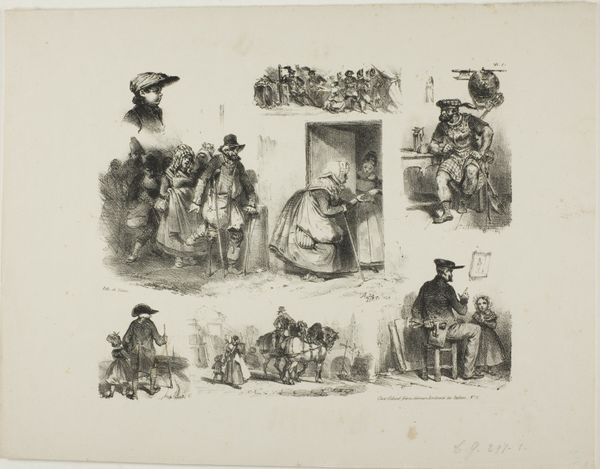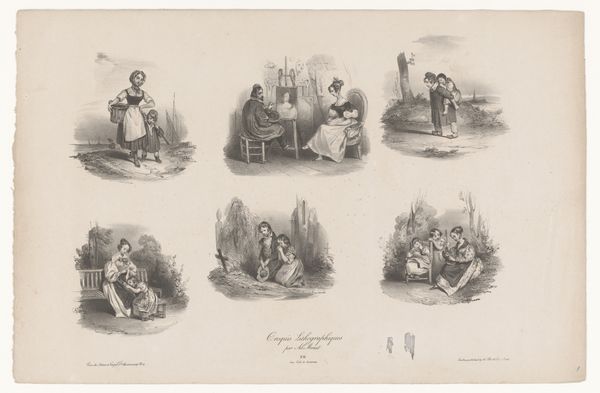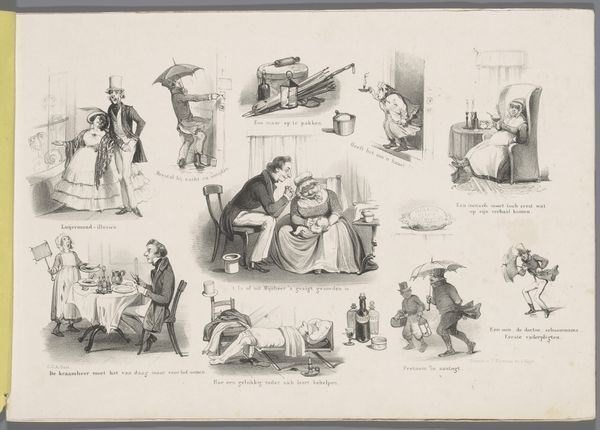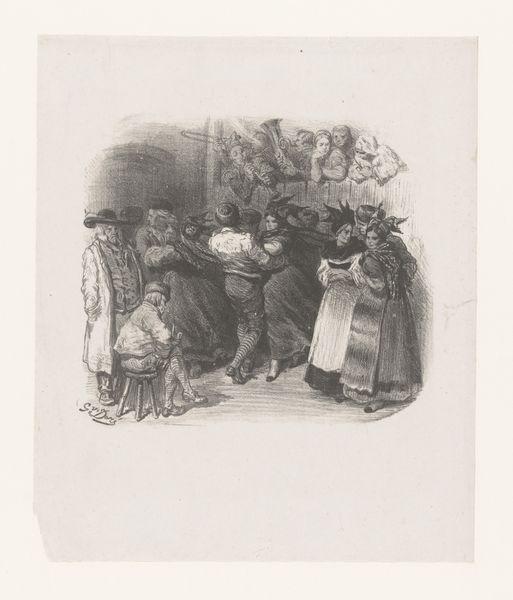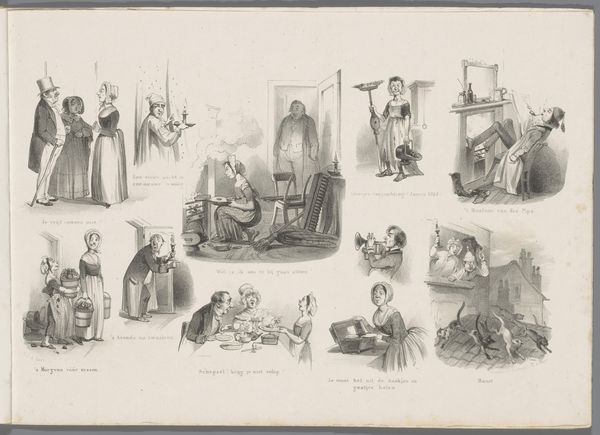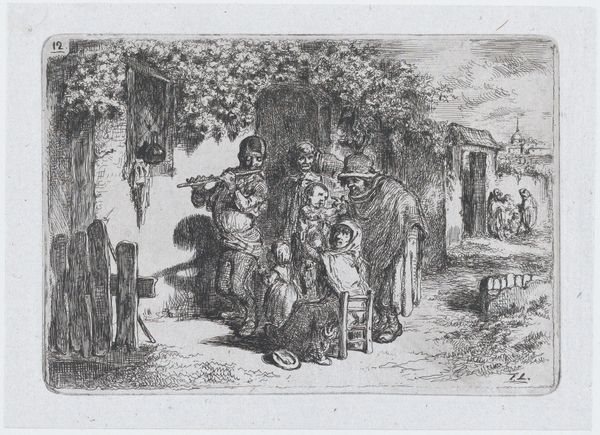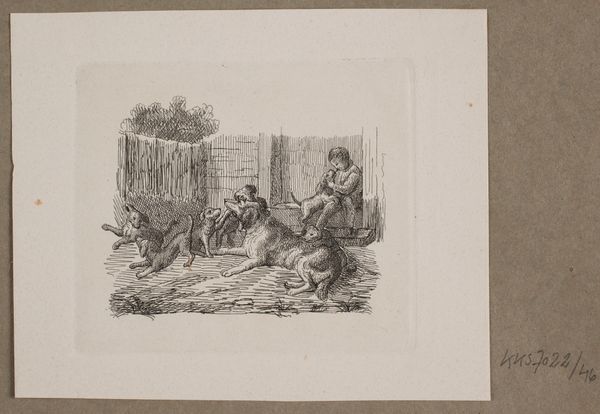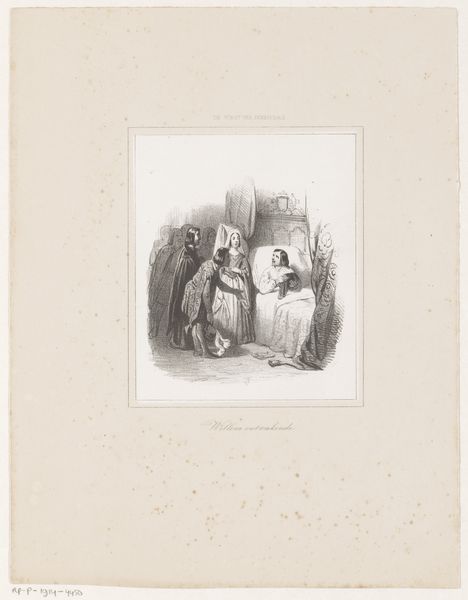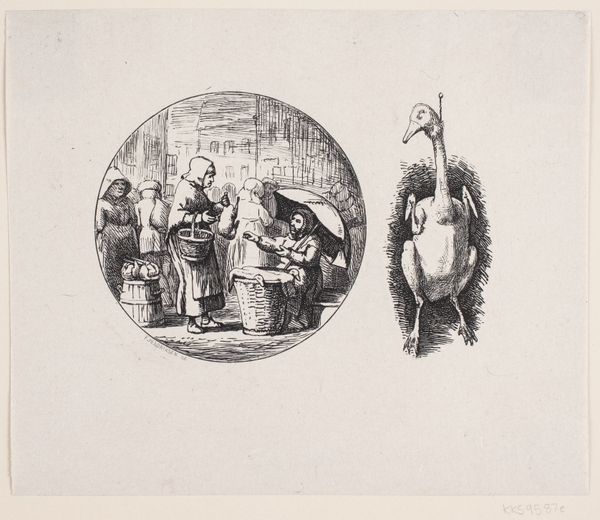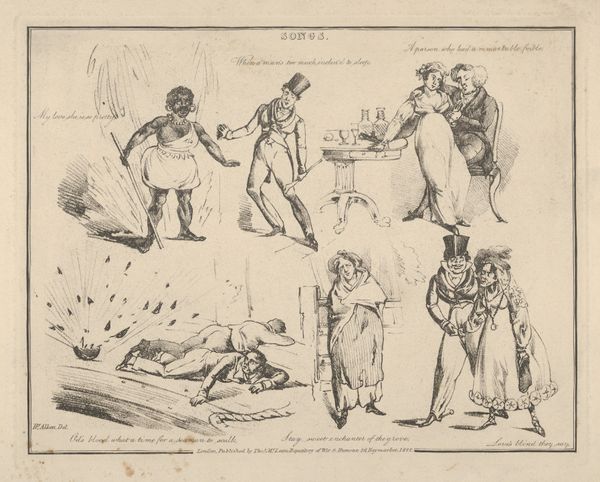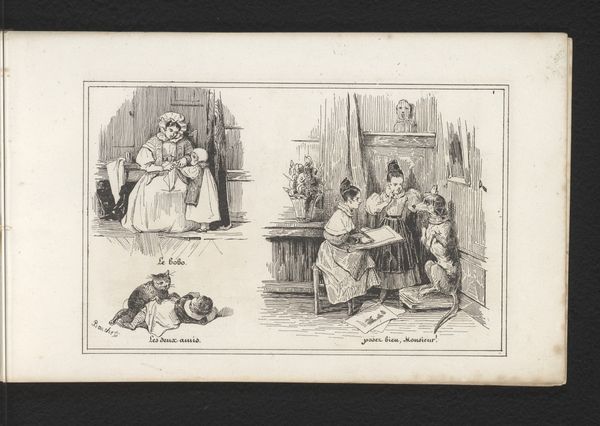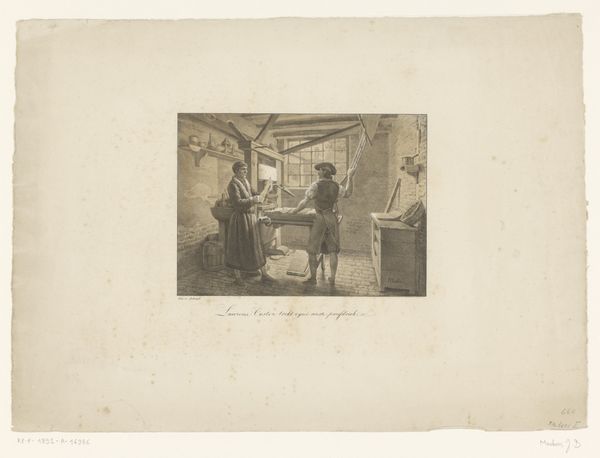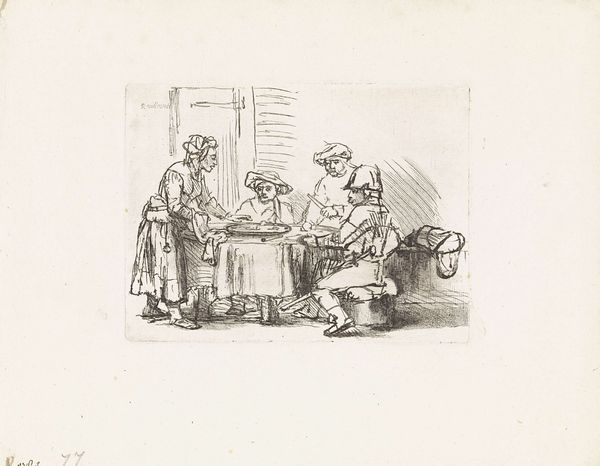
drawing, lithograph, print, paper
drawing
lithograph
paper
genre-painting
academic-art
Dimensions: 201 × 248 mm (image); 281 × 370 mm (sheet)
Copyright: Public Domain
Editor: Okay, so we’re looking at "Sheet of Sketches" by Auguste Raffet, made in 1828. It’s a lithograph, so a print on paper, and it looks like a collection of scenes from everyday life. What strikes me is how it offers little snapshots, like freeze-frames. What do you make of this work, from a historical perspective? Curator: Raffet's "Sheet of Sketches" encapsulates a pivotal moment in the democratization of art. Lithography, as a relatively new and affordable printmaking technique, enabled the wider distribution of images depicting scenes of daily life. These glimpses you mention become interesting when we consider who the audience might have been. Do you notice anything about the subjects Raffet chooses to portray? Editor: They seem to capture moments from different social strata, maybe? There's a soldier, then what looks like a wealthy family traveling, and scenes from what might be a classroom or a domestic interior... It feels a bit like he is showing the breadth of society. Curator: Precisely. And that's where its cultural significance lies. Before this, art was largely confined to portraits of the elite, or grand historical and mythological scenes. But with the rise of a bourgeois public sphere, prints like these began to reflect—and shape—the values and interests of a new audience. Raffet’s focus on "genre painting," these slices of life, makes art accessible and relatable. Consider how this approach challenged established art hierarchies. What kind of impact do you think that had on the perception and function of art within society? Editor: So, it shifted the focus, making art more about reflecting society back to itself, rather than just glorifying the powerful or telling old stories? It makes you wonder about the intentions behind showing this cross-section. Curator: Exactly. It begs the question, is it mere observation, social commentary, or perhaps even something that reinforced existing social structures by showing everyone in their supposed place? Raffet's work becomes a site where these power dynamics play out. Editor: It’s fascinating to think about how a simple sheet of sketches can open up so many questions about the role of art in reflecting and shaping society. I had not thought about this art as a social tool, not just something beautiful. Curator: Indeed, and by examining its cultural context, we gain a deeper appreciation for the power of images to reflect and influence our understanding of the world.
Comments
No comments
Be the first to comment and join the conversation on the ultimate creative platform.

